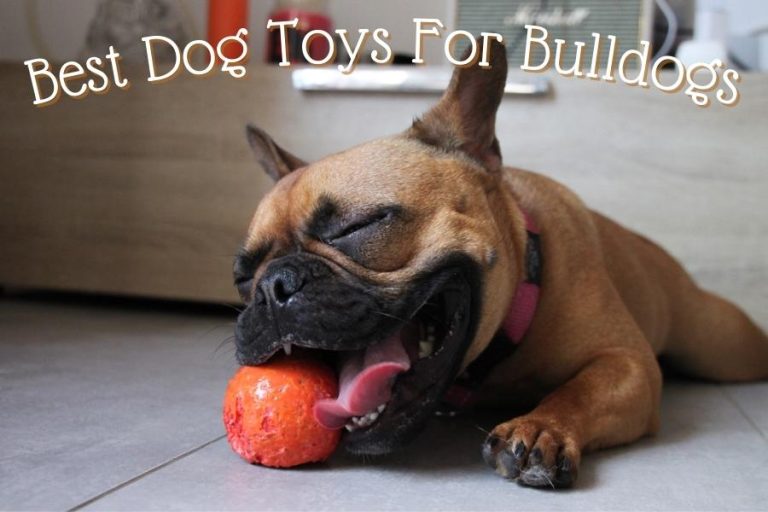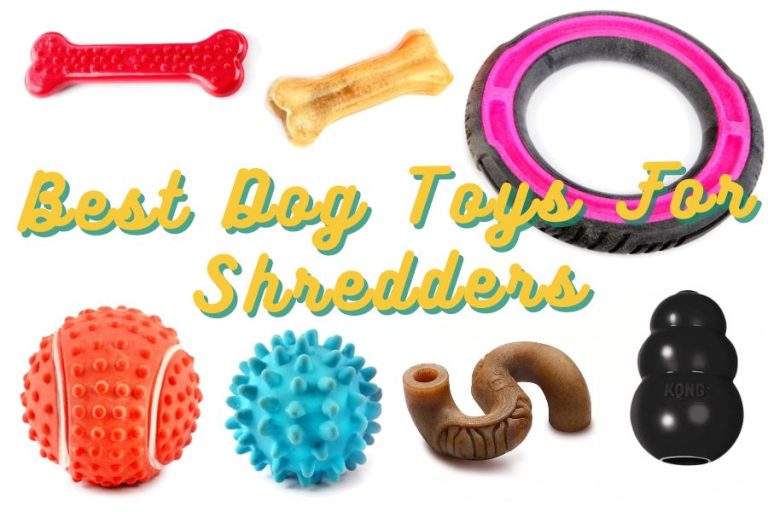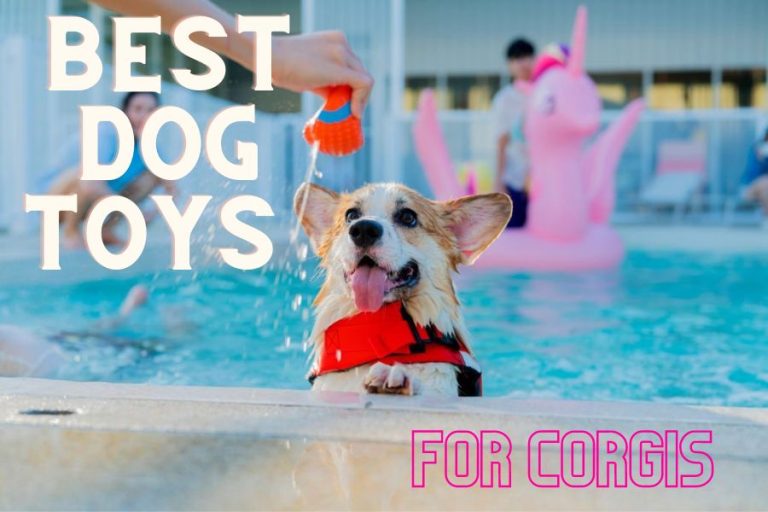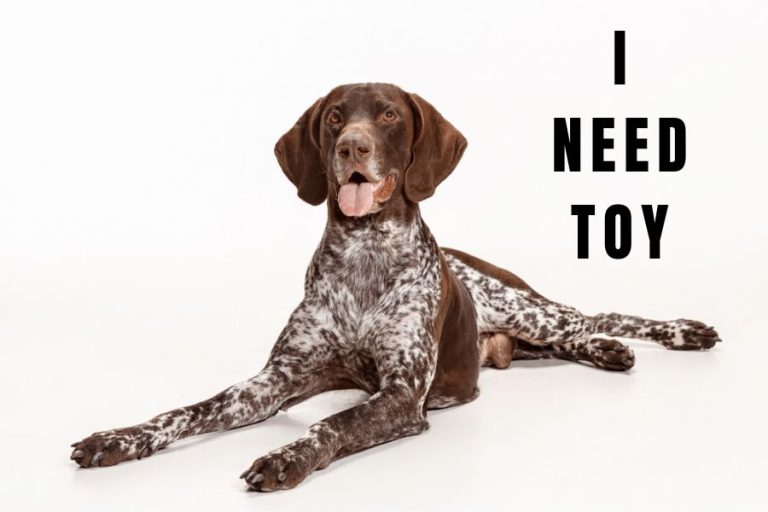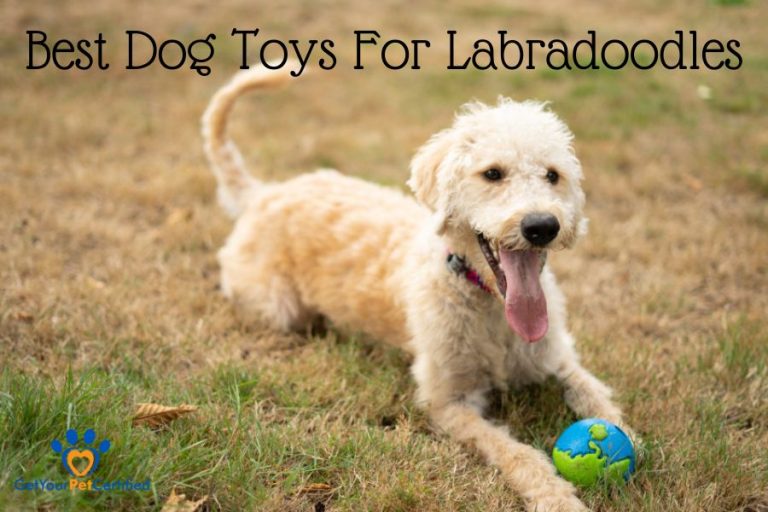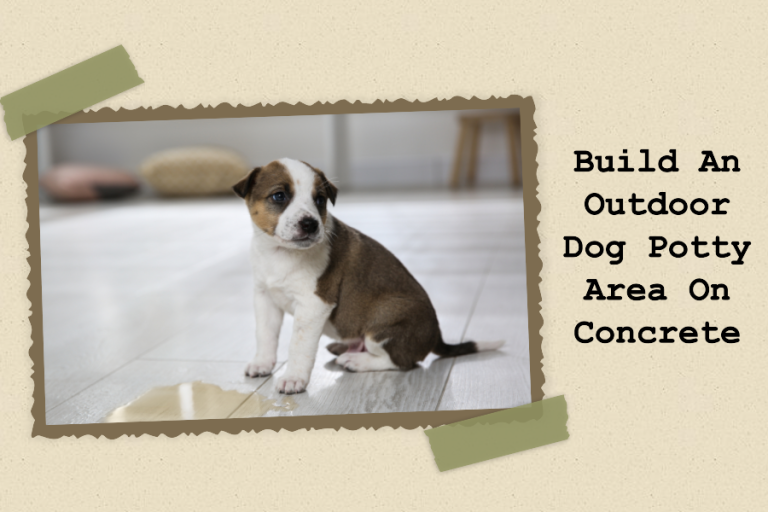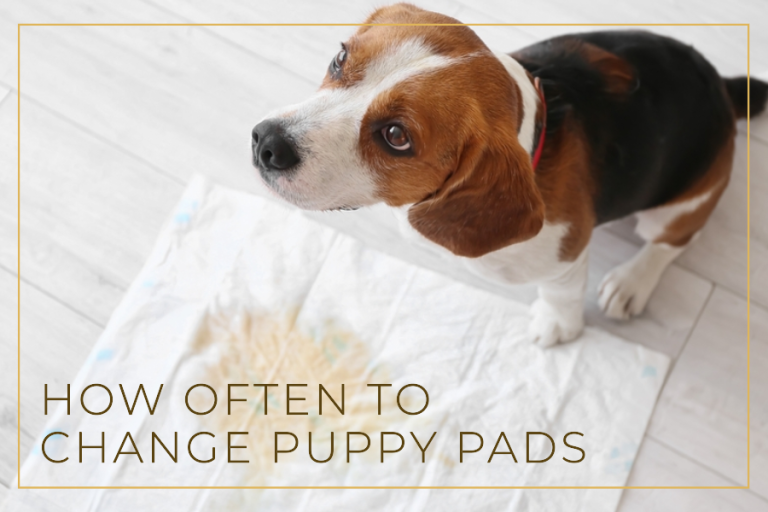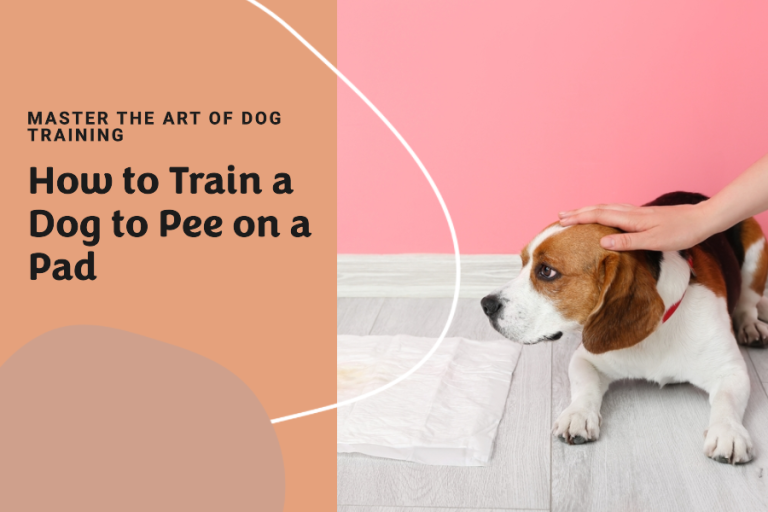What Is The Best Material For Dog Chew Toys?
Dogs have the instinct to chew, and giving them the right toys to do so not only meets this urge but also gives them a lot of other benefits. But not all materials are the same when it comes to how long they last, how safe they are, and how well they fit different dogs.
This article will let you know what materials for chew toys are best for your dog’s habit of chewing and analyze the most common materials for making chew toys on the market.
What is The Best Material for Dog Chew Toys?
Each material has some main characteristics that will determine if it is safe or how engaging it can make the dogs. The best material is the one that fits your dog’s chewing habits the most. When providing them with these toys, you will not only provide entertainment and satisfaction for your dog but also ensure their safety and well-being during playtime.
Durability
Durability is an important factor. When it comes to chew toys for dogs, they should be made with durable materials that can withstand dog chewing habits. These toys shouldn’t be easily broken or worn out. Some materials are known for their strength and resilience, such as rubber or nylon.
Non-toxicity
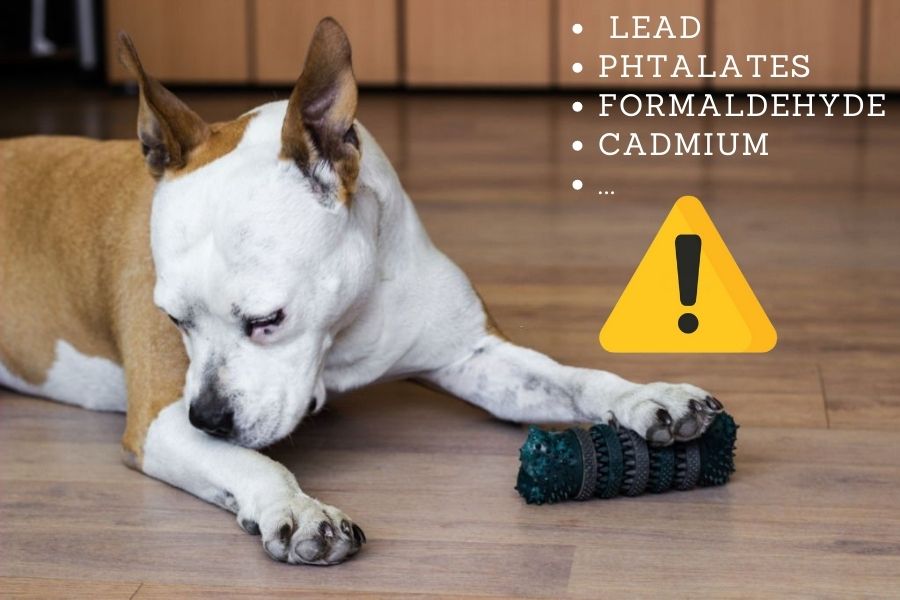
Non-toxic means that there are no harmful chemicals, so if dogs lick or swallow small pieces by mistake, they won’t get sick. Make sure that the materials you use are safe and don’t contain any chemicals that could hurt you.
There are some harmful chemicals that can be found in dog toys:
- Lead: Lead is a heavy metal that can cause damage to the nervous system and brain. It is sometimes used in paints and coatings on toys.
- Phthalates: These chemicals are used as plasticizers to make toys more flexible and durable. Some phthalates may cause reproductive and developmental issues.
- Cadmium: This toxic metal is sometimes used in pigments to create bright colors in toys. It can cause kidney damage and other health problems when ingested in high amounts.
Some people have the misconception on toys made in certain countries will be likely harmful. But this is not always the case. You can read more here!
Size and Texture
Consider the size and texture of the chew toy in relation to your dog’s size, breed, and preferences. Too small or too big toys both make chewing difficult for your puppies.
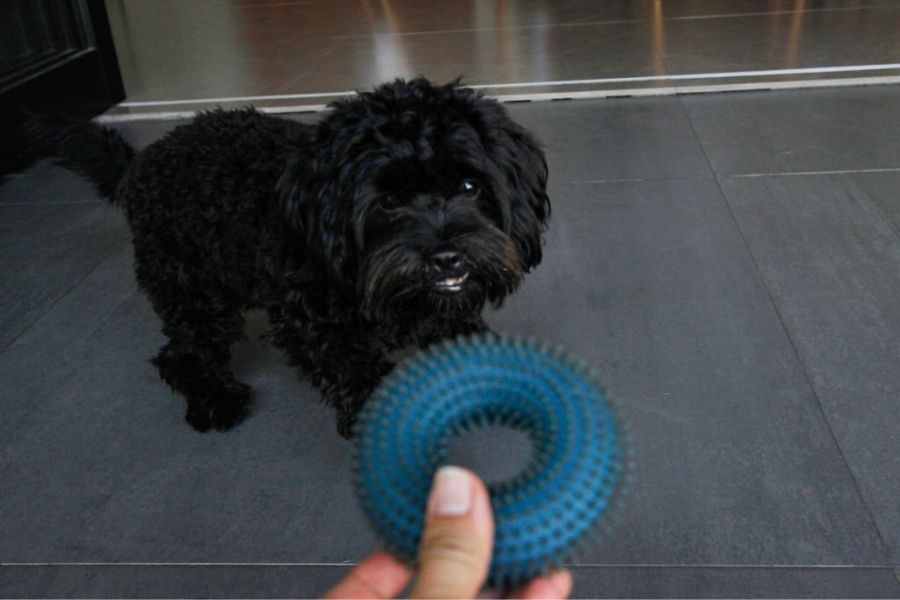
If the toys are too small or have small parts, dogs can easily chew them off and swallow them, putting your dog at risk of choking. If the toys are too big, dogs can’t chew on them comfortably, and they then lose interest in the toy.
The texture of the toy can make it more appealing to your dog. Some dogs may prefer chewing on smooth surfaces, while others may enjoy toys with ridges or bumps for added sensory stimulation. These ridges and bumps are also there to help scrape plaque and tartar off the surface of the teeth and give the gums a gentle rub.
Dog’s Chewing Behavior
Chewing serves as a natural way for dogs to relieve boredom and stress. However, not every dog chews the same way. Think about whether your dog is a middling chewer or a strong chewer. This will help you choose a material that will last and be tough enough to handle their habits. It will also make it less likely that they will hurt themselves or swallow small pieces.
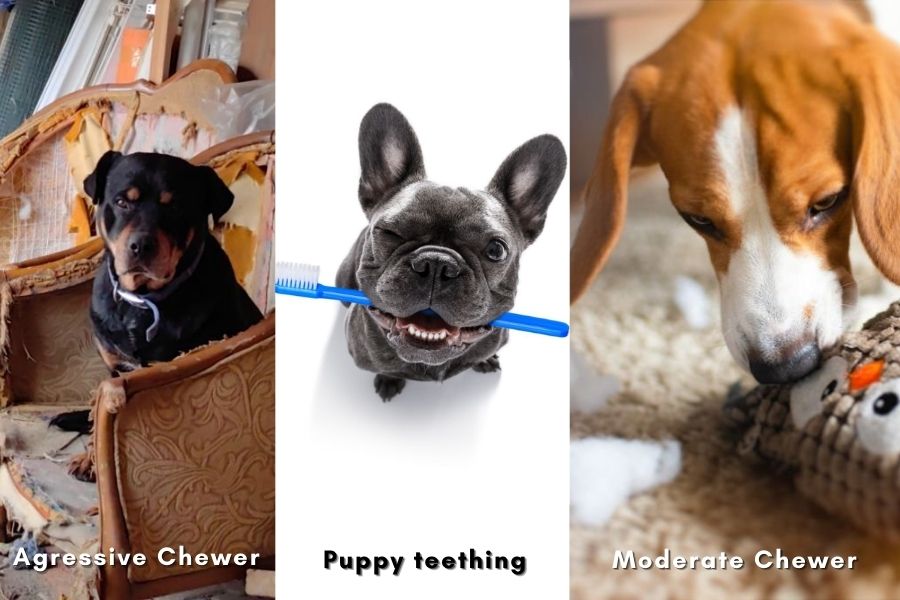
Here are four kinds of dogs with different chewing habits that your dog could fall into:
Puppies and Teething Dogs
Puppies and teething dogs have a strong urge to chew on anything within reach. They need soft chew toys that are easy on their developing teeth. Soft rubber or plush toys are ideal for this type of dog. Toys that can be chilled in the fridge or freezer can also soothe sore gums for puppies.
Read more: Dog toys that you can put water in and freeze
Moderate Chewers
Moderate chewers refer to dogs that chew on things regularly but are not overly aggressive. Nylon chew toys, rope toys, and durable rubber toys are good choices for moderate chewers.
Strong Chewers
Strong chewers are dogs that tend to destroy their toys quickly. Some recommended materials for strong chewers include Kevlar, hard rubber, and sturdy nylon.
Common Materials for Making Dog Chew Toys
Chew toys are physical toys that may or may not provide mental stimulation for dogs. So, the products that go into making chew toys have to meet certain standards. Here are some common materials used to make dog chew toys, along with their pros and cons.
Rubber
Rubber has a firm but also bouncy, and springy feel to it; it’s durable, but we can also bend it. Rubber can be used to make chew toys, but it can also be used to make toys for other purposes, like interactive toys or food-dispensing toys.
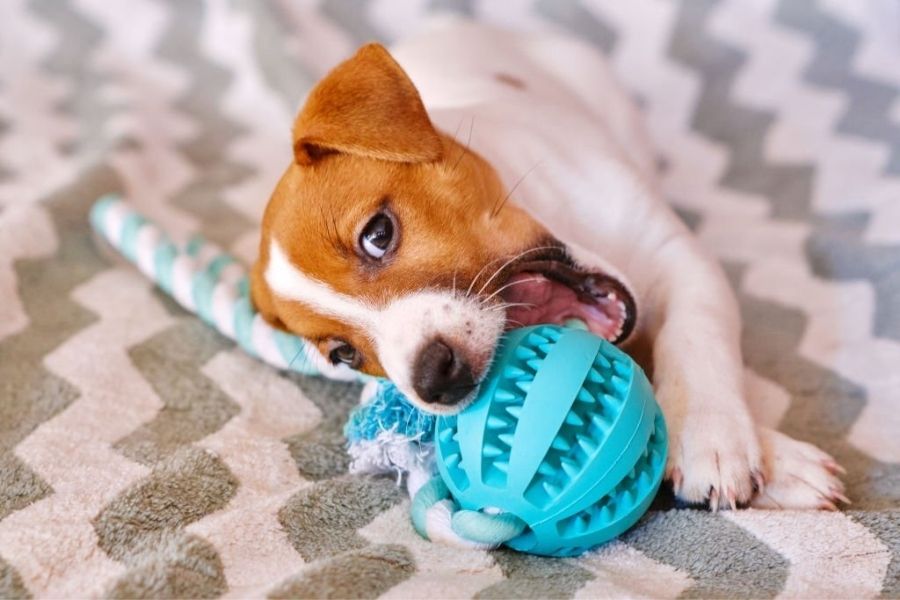
Rubber chew toys tend to be very sturdy, they can stand up well to dogs’ strong jaws. Some rubber toys offer the best of both worlds by having hollows in them where treats can be put, like Kong and Chew King toys.
About safety, rubber is safe and non-toxic, so if a dog swallows it by accident, it won’t be so bad.
Overall, rubber is a popular material for dog chew toys because it is safe, durable, and lasts a long time.
Considerations
Rubber toys may be less likely to break into small pieces that a dog could swallow over time than plush toys or rope toys. But even the toughest rubber toys wear out over time or get small holes or tears.
Some types of rubber might be too tough and tear quickly. Natural rubber is more stable and lasts longer than synthetic rubber, for example.
Because synthetic rubber is quite hard, if your dog chews on it too hard, it can cause him to have tooth problems. And this rubber is not environmentally friendly like natural rubber is.
Nylon
Nylon is a synthetic polymer made up of repeating units of amide molecules. It is often used in various applications, such as textiles, carpets, and brushes.
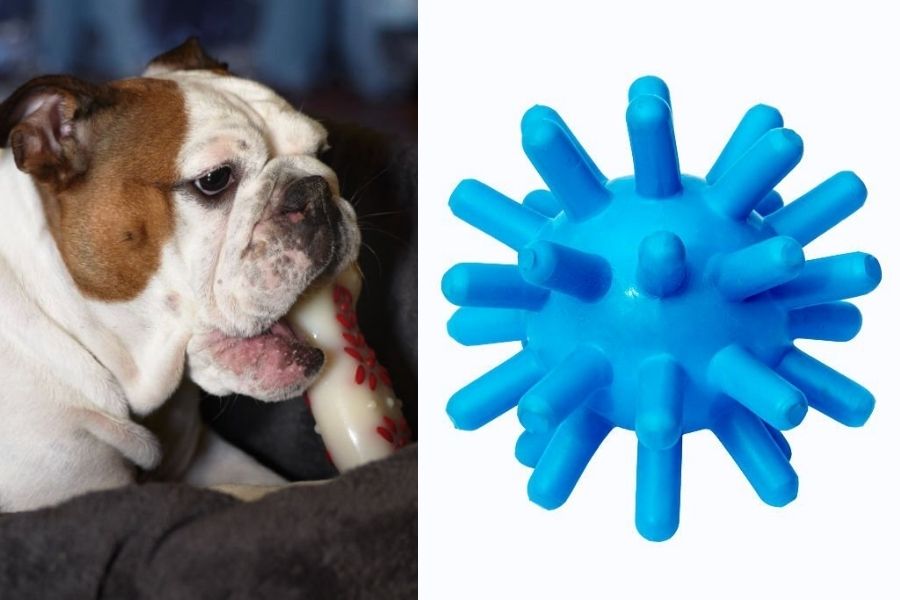
Nylon in dog chew toys is typically considered a hard plastic, and in some forms, it can be hard and rigid. Compared to rubber or polymer materials, nylon may have a lower bounce.
With these in mind, we know that nylon can withstand heavy chewing, making it a popular material for chew toys for aggressive chewers
Considerations
Similar to rubber toys, the hardness of nylon toys should match your dog’s chewing strength to avoid dental damage.
Between nylon and rubber, nylon is usually thought to be harder. Nylon is more stiff and less elastic than rubber. Because of these facts, nylon can easily cause dogs to break their teeth or get other dental injuries.
Rope
While rope toys are mainly designed for interactive games like tug-of-war, providing mental and physical stimulation, they can be used for chewing as well.
Rope toys often have a fibrous texture that can help remove plaque and promote healthy teeth and gums.
Considerations
This type of chew toy might not be good for dogs that like to eat the pieces. Because rope toys can fray or come apart, the free threads can be small enough for your dog to swallow or choke on.

Plush
Plush toys, which are also called stuffed toys or stuffed animals, are usually made with a soft cloth like cotton or polyester for the outside and a flexible filler like cotton, synthetic fibers, or beans for the inside.
Plush toys are gentle on dogs’ mouths, making them suitable for gentle chewers or dogs that prefer softer textures.
Also, dogs often find comfort and companionship in plush toys, treating them as cuddle buddies.
Considerations
When it comes to chew toys for dogs, plush toys are generally less durable than rubber or nylon toys and may not withstand heavy chewing.
Dogs who are aggressive chewers or prone to ripping apart toys may risk ingesting stuffing or the squeakers inside.
Also, you have to spend more money because dogs like to destroy stuffed animals, but they do it so quickly that you have to buy new ones all the time. This makes it quite expensive to use stuffed animals.
Wrap It Up
In conclusion, you can choose the right material for your dog’s chew toys if you think about these factors: sturdiness, non-toxicity, size and texture, and, most importantly, your dog’s chewing habits.
And what is the best material for dog toys that they can chew?
Taking into account all the pros and cons, I would say that rubber is the best medium. Because rubber can last for a long time, is soft and flexible enough that it won’t hurt your dog’s teeth, and can be used for many things besides just chewing, like food dispensing, playing fetch games, and so on,…


